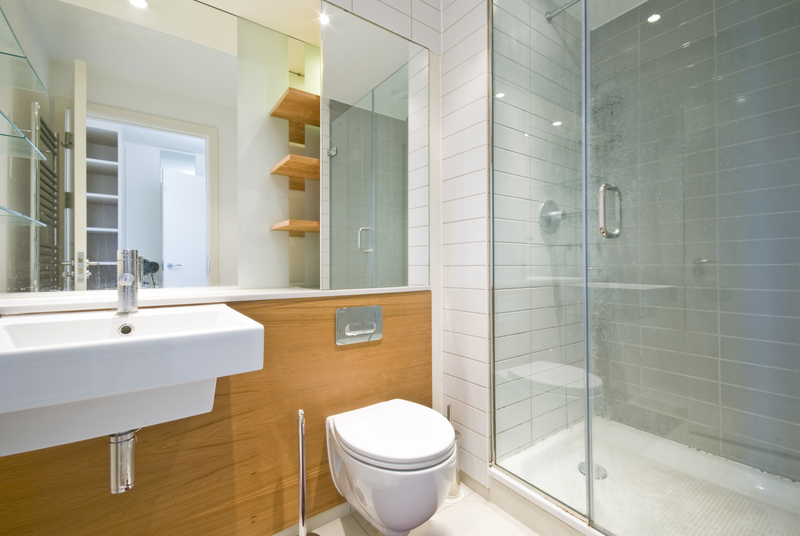Sparkling Enamel: Simple Strategies for Cleaning Trays Without Grease
Posted on 17/09/2025
Sparkling Enamel: Simple Strategies for Cleaning Trays Without Grease
Are you struggling to achieve a sparkling enamel tray free from stubborn stains and grime? Whether you're a home chef or simply want to maintain your kitchenware in top-notch condition, effective enamel tray cleaning is essential. But what if there's no grease involved--just baked-on messes, burnt bits, or dingy discolorations? You've come to the right place! In this comprehensive, SEO-optimized guide, we'll share proven methods and expert advice to help you clean enamel trays easily--without the hassle of grease.
Why Choose Enamel Trays?
Enamel trays have become a kitchen staple for their durability, non-stick surface, and resistance to rust.
But even enamel needs regular care. Over time, residue, stains, and discolorations can mar the shine, making tray cleaning a necessary routine even if there's no oily buildup. Luckily, non-greasy enamel cleaning is straightforward--and can help maintain that brilliant sheen for the long haul.

Understanding Enamel: What Makes It Special?
Enamel is formed by fusing powdered glass to a base material (usually steel or cast iron) at high temperatures. This creates a glass-like, impervious layer:
- Resistant to corrosion and scratching
- Non-porous and easy to clean
- Doesn't react with acidic foods
Top Benefits of Keeping Your Enamel Tray Spotless
- Enhances Food Flavor: A clean surface ensures pure flavors.
- Prevents Staining: Regular maintenance keeps enamel white and bright.
- Improves Hygiene: Eliminates bacteria, mold, and unpleasant odors.
- Extends Lifespan: Caring for your enamel trays prevents chips and cracks.
- Boosts Presentation: Your meals look more inviting on a sparkling clean tray.
Common Challenges: Trays Without Grease
People often imagine cleaning trays as a greasy, oily affair. But what about when there's no grease involved?
Here are typical issues with non-greasy enamel trays:
- Baked-on stains from sugar, sauces, or juices
- Burnt bits from high-heat roasting
- Discoloration over time, especially on white enamel
- Odors from potent dishes
Essential Supplies for Sparkling Enamel Trays
Before diving into enamel tray cleaning without grease, gather the following:
- Soft sponge or microfiber cloth
- Baking soda
- Distilled white vinegar
- Lemon juice or fresh lemon
- Mild dish soap
- Non-abrasive scrub brush (optional)
- Hot water
- Plastic scraper or wooden spatula (for stubborn bits)
Step-by-Step: How to Clean Enamel Trays Without Grease
1. Cool Down and Pre-Rinse
Always allow your tray to cool before cleaning--sudden temperature changes can cause enamel to crack.
- Remove any leftover food particles.
- Rinse the tray under hot water to loosen surface residue.
2. Make a Gentle Cleaning Solution
- Mix a few drops of mild dish soap with warm water.
- Dampen your soft sponge or microfiber cloth.
- Wipe the entire tray, paying special attention to corners and edges.
3. Tackle Stains With Baking Soda
For persistent stains or discoloration, try this natural paste:
- Sprinkle a generous layer of baking soda on damp parts of the tray.
- Let it sit for 15 minutes. Baking soda works as a gentle abrasive and deodorizer.
- Scrub lightly with a non-abrasive brush or the rough side of your sponge. Do not use steel wool!
- Rinse thoroughly with warm water.
4. Lift Stubborn Burnt Bits
If burnt-on food particles remain, make use of vinegar and baking soda:
- Pour enough white vinegar to cover the tray's bottom.
- Sprinkle a layer of baking soda on top.
- Allow the mixture to fizz (this reaction helps lift stuck bits).
- After about 10 minutes, scrub lightly.
- If needed, use a plastic scraper or wooden spatula to gently dislodge residue.
- Rinse well to reveal a sparkling enamel tray.
5. Remove Odors With Lemon
For lingering smells, look no further than lemon juice or fresh lemon.
- Cut a lemon in half and rub it directly onto the tray's surface. Lemon is safe, natural, and leaves a fresh scent.
- Allow the juice to sit for 5-10 minutes.
- Rinse and dry as usual.
6. Rinse and Dry
After cleaning, always:
- Rinse thoroughly with hot water to remove all cleaning agents.
- Dry the tray immediately with a soft towel or cloth. This helps prevent water spots and keeps the enamel gleaming.
Preventative Care: Maintaining Sparkling Enamel
Ongoing care makes cleaning easier and keeps your trays sparkling without the need for strong detergents or scrubbing.
- Always clean trays after each use--don't let residue accumulate.
- Line trays with parchment or silicone mats to minimize food contact and simplify cleaning.
- Avoid thermal shock (don't move hot trays directly to cold water).
- Store trays dry--stack carefully or hang to avoid chipping the enamel.
Eco-Friendly Cleaning Solutions for Enamel Trays
If you prefer sustainable cleaning, you'll be pleased to know that most effective methods for sparkling enamel are also eco-friendly!
- Baking soda and vinegar: Biodegradable, safe, and effective.
- Lemon: Naturally antibacterial and pleasant-smelling.
- Microfiber cloths: Reusable and gentle on enamel surface.
By choosing green cleaning methods, you protect both your health and the environment--while keeping your trays spotlessly clean.
What to Avoid When Cleaning Enamel Trays
- No harsh abrasives: Never use steel wool, metal pads, or powders that can scratch.
- No strong acids or cleaners: Bleach or concentrated acids can dull or discolor enamel.
- No soaking overnight: Extended soaking can damage the enamel at edges and seams.
- No dishwasher for vintage trays: Older or decorative trays should be washed by hand to prevent chipping.
Special Tips for White Enamel Trays
White enamel is beautiful yet shows stains easily. If your white tray loses its shine:
- Make a paste with baking soda and hydrogen peroxide (for very stubborn stains).
- Apply to stained areas, wait 15 minutes, then scrub gently.
- Rinse thoroughly and dry.
How to Restore Dull, Cloudy, or Discolored Enamel
With time, enamel trays may look cloudy or have a greyish tinge. To restore brilliance:
- Fill the tray with hot water and a few splashes of vinegar.
- Let sit for 30 minutes.
- Scrub with a sponge, then rinse and dry.

Quick Reference: Sparkling Enamel Cleaning FAQ
Can you use baking soda on all enamel trays?
Yes, baking soda is a safe choice for most modern enamelware. Always scrub gently.
Is dish soap enough for regular cleaning?
For daily use and minimal messes, mild dish soap and warm water are perfect for sparkling enamel trays.
What if the tray is still stained after cleaning?
Try repeating the baking soda and vinegar method. Persistent stains may need a hydrogen peroxide paste (for white enamel only).
Can you use a dishwasher for enamel trays?
Many modern enamel trays are dishwasher safe, but hand-washing is gentler and extends the tray's life--especially for retro or decorative pieces.
How to keep enamel trays from scratching?
Always use soft sponges/plastic utensils, avoid metal tools, and store trays so they don't rub against hard surfaces.
Conclusion: Enjoy Effortlessly Sparkling Enamel Trays
With these simple, effective strategies, cleaning enamel trays--especially when grease isn't the culprit--is truly hassle-free. By arming yourself with natural, gentle cleaning agents, you not only achieve sparkling enamel but also help your trays last for years.
Whether you're serving up a family dinner or prepping for a celebration, a spotlessly clean tray adds to your baking and roasting experience.
In summary:
- Be gentle and act quickly after use.
- Rely on household ingredients: baking soda, vinegar, lemon, and mild soap.
- Avoid abrasives, strong chemicals, and thermal shock.
- Enjoy the beauty and performance of sparkling enamel trays every day!
Are you ready to make your enamel trays sparkle without grease? Try these tips and let your kitchenware shine bright!



